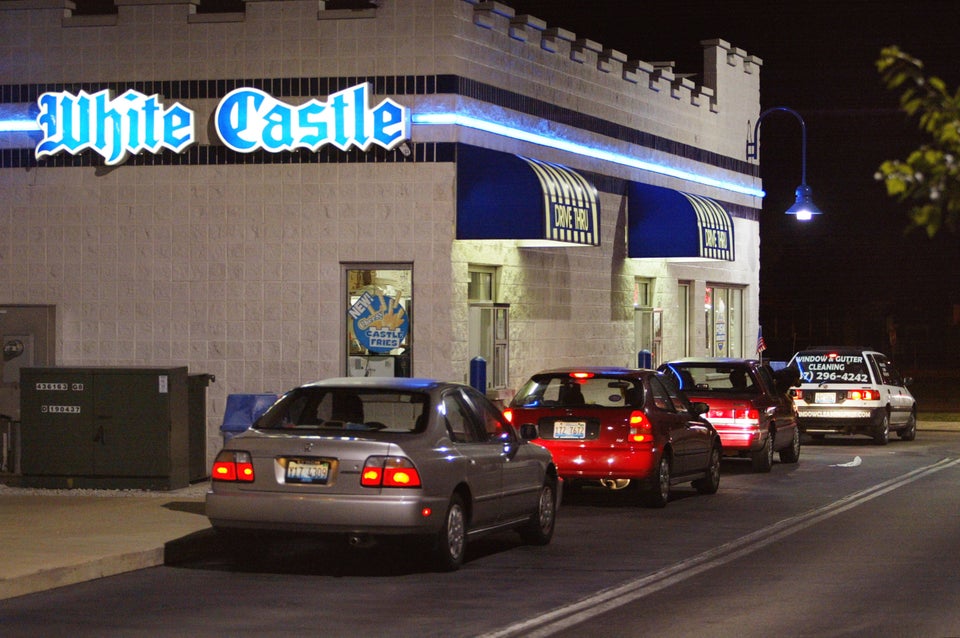WASHINGTON -- A recent government study of workers at a poultry plant in South Carolina determined that four out of 10 showed signs of the painful hand-and-arm condition known as carpal tunnel syndrome, a finding that raises fresh concerns about a federal proposal that would allow plants to speed up their slaughtering lines.
Poultry processing work is full of repetitive motion, and numerous reports have documented the job's health and safety hazards over the years. The recent study by the National Institute for Occupational Safety and Health (NIOSH) examined just one plant, but workplace health experts say it offers one of the most granular looks at how the job takes a toll on line workers -- and how faster line speeds, currently being considered by the U.S. Department of Agriculture, could possibly make things worse.
"This gives you a snapshot of what goes on in one plant," said Celeste Monforton, a public health expert at George Washington University. "It's done and it shows damning results. ... I don't know how USDA will dismiss what's in this."
NIOSH experts visited the plant twice last year, examining workers who eviscerate, debone and cut chickens to prepare them for sale, according to the report. They interviewed the workers about hand and arm pain and performed nerve conduction tests on them. Forty-two percent had indications of carpal tunnel, and a majority of workers reported "multiple musculoskeletal symptoms," most commonly hand and wrist pain.
Read the report below.
Out of 318 participants at the plant, 213 "reported pain, burning, numbness or tingling in their hands or wrists in the past 12 months." Furthermore, two-thirds of those 213 workers reported "awakening from sleep because of these symptoms."
Despite those findings, public health and labor advocates say these workers may soon see their workloads increase.
Last year, the USDA put forth a proposal to overhaul the poultry inspection process. The change would pull many government inspectors off the slaughtering line where they visually inspect birds, moving resources instead toward the detection of bacteria and other invisible dangers. The rule change would thereby allow poultry plants to speed up their slaughtering lines, delivering savings to poultry companies.
Backers have pitched the proposal as a cost-saver for both government and industry. Critics, however, have called it a giveaway to the poultry business that could have unintended consequences.
Many occupational health experts have objected to the proposal, saying line speeds already move too fast for workers like those in the South Carolina plant that NIOSH visited. USDA officials have told stakeholders privately that the change wouldn't impact line workers, drawing a distinction between the slaughtering process, where the speedup would occur, and the processing line, where most workers toil.
But critics like Tony Corbo, a lobbyist at the watchdog group Food & Water Watch, say that if chickens are being slaughtered at a faster rate, then it stands to reason they will be processed at a faster rate as well. Corbo told HuffPost he's skeptical that poultry plants, well-known for their tight controls on labor costs, will be eager to add more workers to the lines to account for a slaughtering speedup. Many plant employees already work essentially shoulder-to-shoulder, he noted.
"If you're speeding up the lines, guess what -- it's going to impact the speed at which those workers are chopping up the chickens," Corbo said. "Unless they establish new lines in the factories, those workers are going to be working faster and faster.
"Remember Lucy in the candy factory?" he added.
Poultry line workers are among some of the most vulnerable laborers in the U.S. The polyglot workforces often include immigrants from Latin American and African countries, who generally work for low pay on demanding production schedules. Class-action lawsuits have become common in the industry, with workers claiming they're shorted on their wages or required to work off the clock.
The NIOSH study was done at the request of the Agriculture Department, and the South Carolina plant was required to undergo the evaluation in order to secure a waiver under the current line-speed rules. A NIOSH spokeswoman said experts will evaluate the workers again after the speedup to determine what, if any, the health effects have been. Those results will be shared with the USDA as well.
An Agriculture Department spokeswoman said the agency "welcomes NIOSH's work" and is reviewing the study's findings.
"This data is preliminary," she said in an email. "We look forward to the full results of NIOSH’s research and to working with them further on this issue."
The agency wouldn't be required to alter or scrap the speed-up proposal based on any health findings, and it isn't clear what bearing NIOSH's studies will have on the final rule. As Monforton and others noted, the White House and the USDA appear committed to moving forward with the rule.
The president's most recent budget proposal assumes the rule will go into effect -- an assumption that the left-leaning Center for Progressive Reform calls a "rebuke" to concerned parties.
"The President’s budget suggests that most of these concerns, raised by a broad coalition of the public interest community, have been ignored in a headlong rush to finalize a rule that officials believe will save a few million dollars," the group wrote. "Yet, some hope remains that the rule is not written in stone."
Read the NIOSH report here.

